Imagine stepping onto your patio or balcony and picking fresh, juicy blueberries right from your very own container garden. It’s easier than you might think! Blueberries are not only delicious and packed with antioxidants, but they’re also well-suited for container growing — perfect for small gardens, balconies, and urban spaces.
In this detailed guide, we’ll cover everything you need to know to successfully grow healthy, productive blueberry plants in containers. From choosing the right variety to soil preparation, watering, and harvesting, let’s turn your outdoor space into a fruitful blueberry haven.
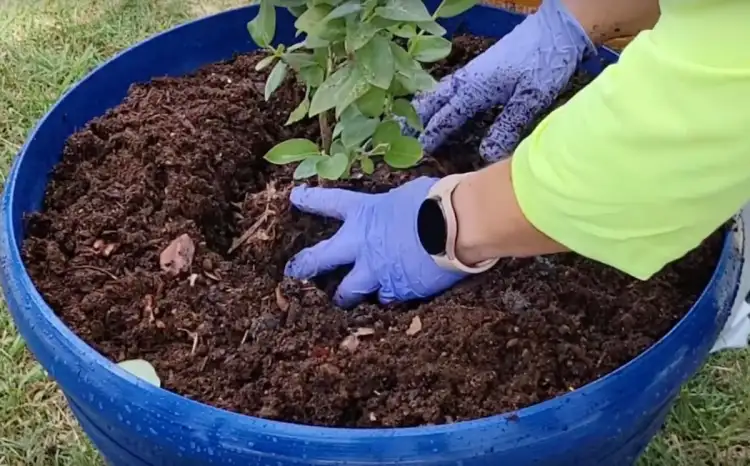
Why Grow Blueberries in Containers?
Container gardening offers unique advantages, especially for blueberry plants:
- Control over soil pH and quality (essential for blueberries)
- Easier to move plants to ideal sun positions
- Manageable pest and disease control
- Great for small spaces, patios, balconies, and decks
- A decorative and edible plant with beautiful spring blossoms and vibrant fall foliage
With the right care and a little patience, your container-grown blueberries can yield delicious berries for years to come.
Step 1: Choosing the Right Blueberry Variety
Not all blueberry varieties are the same, especially when it comes to container growing. Some types stay compact and thrive in confined spaces, while others may be too vigorous.
Best Blueberry Varieties for Containers:
- Top Hat – A dwarf variety ideal for pots, growing up to 2 feet tall.
- Sunshine Blue – Semi-dwarf, self-pollinating, with excellent yields.
- Jelly Bean – Compact, with sweet berries and attractive foliage.
- Patriot – Cold-hardy and suitable for larger containers.
- Peach Sorbet – Known for its colorful leaves and flavorful berries.
Pro Tip:
Although some varieties are self-pollinating, having at least two different blueberry varieties nearby improves pollination and increases fruit yield.
Step 2: Selecting the Perfect Container
Your container’s size and material are crucial for healthy root development and long-term growth.
Container Requirements:
- Minimum size: 16-20 inches in diameter and depth
- Material: Plastic, ceramic, or wooden planters work well
- Drainage: Must have ample drainage holes to prevent waterlogging
Bonus Idea:
Consider using decorative pots or whiskey barrels for a rustic, aesthetic touch on patios and balconies.
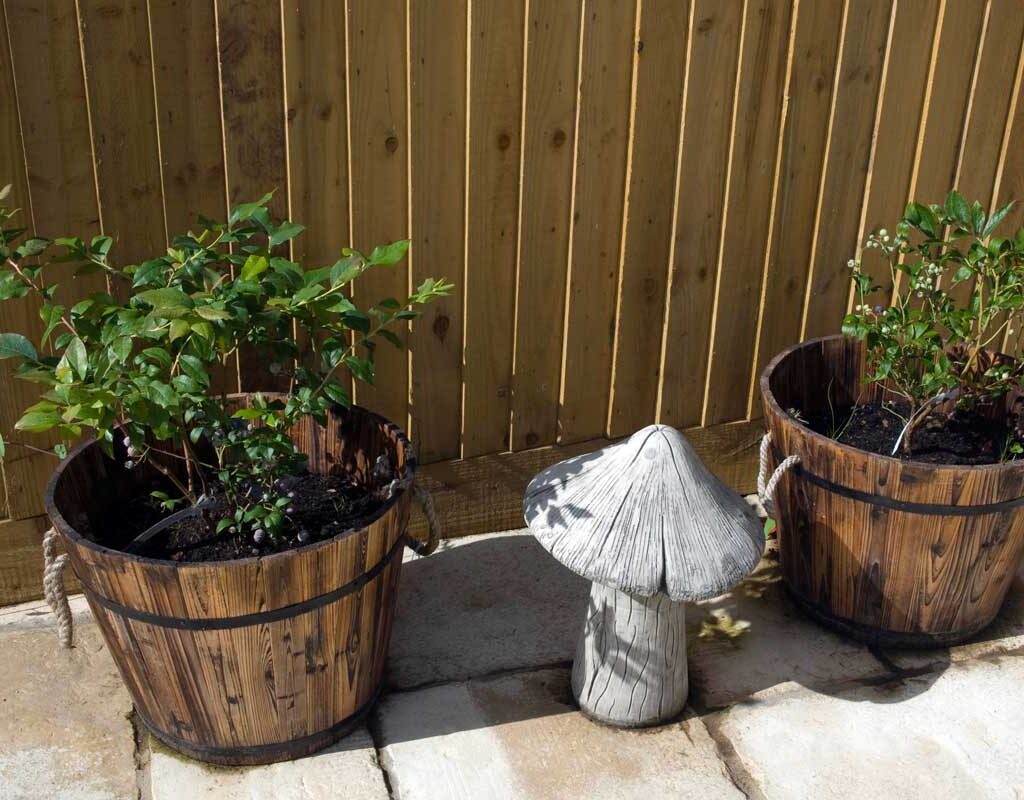
Step 3: Preparing the Right Soil Mix
Blueberries are acid-loving plants, thriving in soils with a pH of 4.5 to 5.5. Regular garden soil won’t work well in containers.
Ideal Soil Mix for Blueberries:
- 50% peat moss
- 30% pine bark fines
- 20% perlite or coarse sand
Alternatively, you can use a commercial acid-loving plant mix formulated for azaleas, rhododendrons, or camellias.
Pro Tip:
Test your soil’s pH using a simple home kit. If needed, lower the pH with elemental sulfur or an acidifying fertilizer.
Step 4: Planting Your Blueberries
Planting blueberries in containers is straightforward, but attention to detail ensures their success.
Planting Instructions:
- Fill the container with your prepared acidic soil mix, leaving about 2 inches below the rim.
- Remove the plant from its nursery pot, gently loosening the root ball.
- Place the blueberry plant in the center of the container at the same depth it was growing previously.
- Backfill with soil mix and gently firm it down.
- Water thoroughly until water drains out of the bottom.
Add a 1-2 inch layer of pine bark mulch or pine needles on top to help retain moisture and maintain soil acidity.
Step 5: Watering and Feeding
Blueberries have shallow roots and are sensitive to dry soil, especially in containers.
Watering Tips:
- Keep soil consistently moist but not waterlogged.
- In hot weather, you may need to water daily.
- Avoid using hard water with high pH; rainwater or distilled water is ideal.
Fertilizing:
Use a fertilizer specifically made for acid-loving plants.
- Apply an acid fertilizer in early spring, just as new growth starts.
- Feed again in late spring or early summer.
- Avoid over-fertilizing, as it can damage sensitive roots.
Organic options like fish emulsion or cottonseed meal work beautifully for container-grown blueberries.
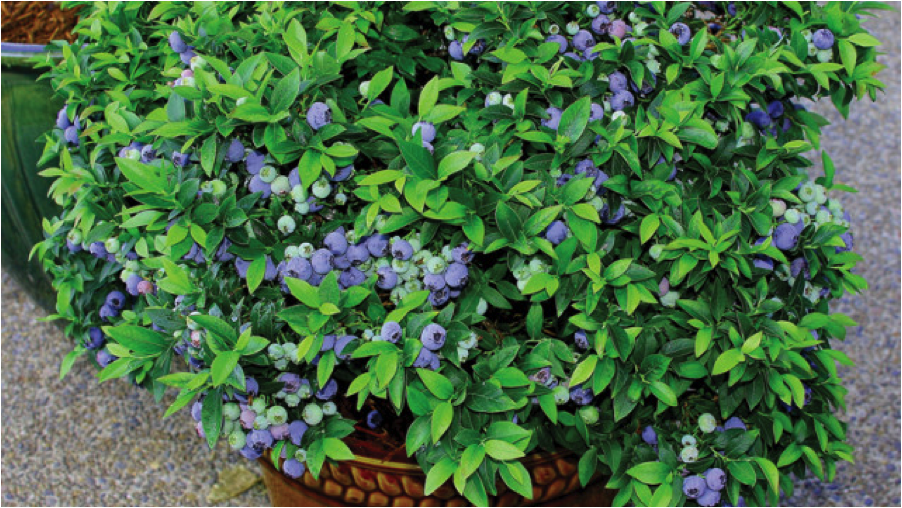
Step 6: Providing Adequate Sunlight
Blueberries love the sun! For healthy growth and maximum fruit production:
- Place containers in a spot with at least 6–8 hours of direct sunlight daily.
- In very hot climates, some afternoon shade may be beneficial.
- Containers are portable — move them to track the sun’s position through the seasons.
Step 7: Pruning and Maintenance
Pruning keeps your blueberry plants compact, productive, and encourages new growth.
Pruning Guidelines:
- Remove any weak, dead, or crossing branches in late winter or early spring.
- After fruiting, prune lightly to maintain a balanced, open shape.
- Remove older, unproductive canes after 3–4 years to promote younger shoots.
Container Tip:
Dwarf varieties typically require less pruning than full-sized bushes.
Step 8: Managing Pests and Diseases
Container-grown blueberries are easier to monitor and manage for pests and diseases.
Common Issues:
- Birds: Net your plants during ripening season to protect your berries.
- Aphids: Wash off with water or use insecticidal soap.
- Fungal diseases: Prevent by avoiding overhead watering and ensuring good air circulation.
Regularly inspect your plants and remove any diseased or damaged leaves and stems.
Step 9: Overwintering Your Container Blueberries
In colder climates (USDA zones 3–7), container blueberries need extra care in winter.
Overwintering Tips:
- Move containers to a sheltered, unheated garage, shed, or basement during severe freezes.
- Water occasionally to prevent roots from drying out.
- Alternatively, wrap the container in bubble wrap or burlap and mulch heavily around the base.
Once the risk of frost passes, move the plant back to its sunny outdoor spot.
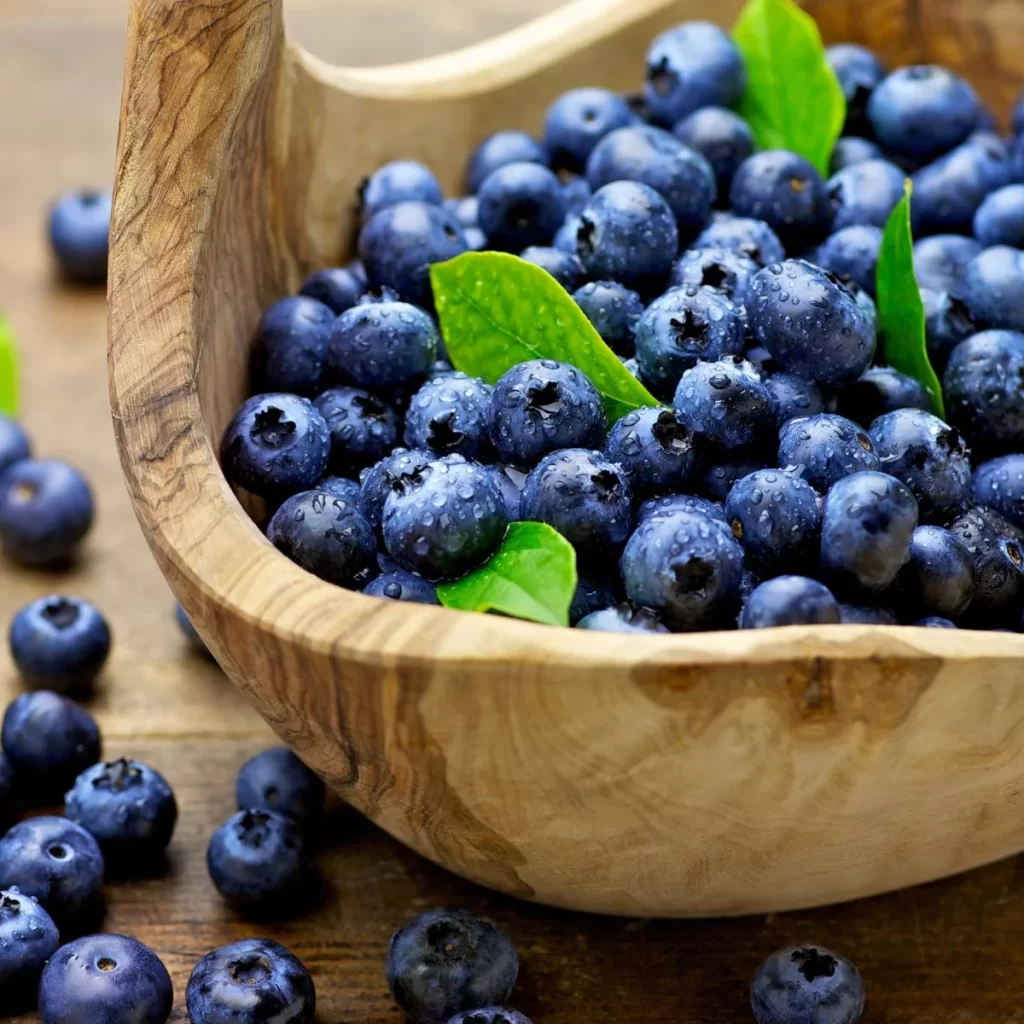
Step 10: Harvesting Your Blueberries
The best part of growing blueberries is enjoying the harvest!
How to Know When Blueberries Are Ripe:
- Fully blue with no green or red tinges.
- Slightly soft to the touch.
- Easily detach from the plant with a gentle tug.
- Allow berries to stay on the bush for a few extra days after turning blue for peak sweetness.
Harvest Tip:
Pick berries in the cool morning hours for the best flavor and storage life.
Final Thoughts
Growing blueberries in containers is a fun, rewarding project that offers fresh, healthy fruit right at your fingertips. By choosing the right variety, maintaining acidic soil, providing ample sunlight, and consistent care, you’ll enjoy bountiful harvests of sweet, antioxidant-rich berries year after year.
Whether you have a sprawling backyard or a modest balcony, container-grown blueberries are a beautiful, productive, and healthful addition to any home garden.

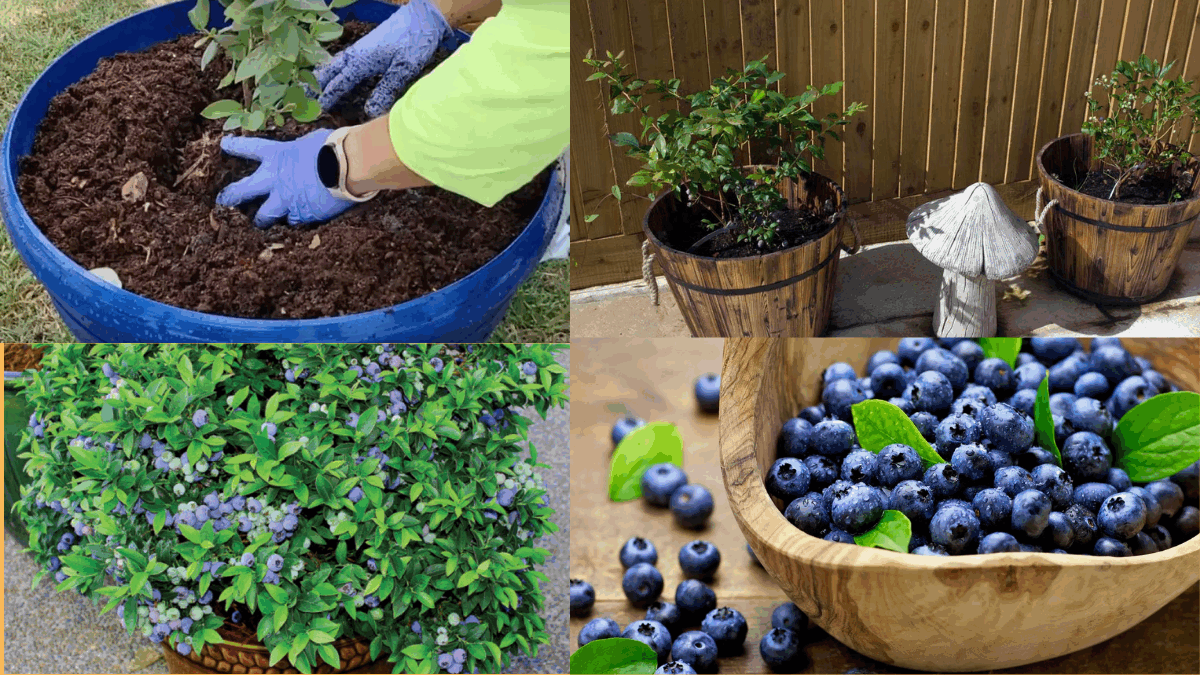




Leave A Comment